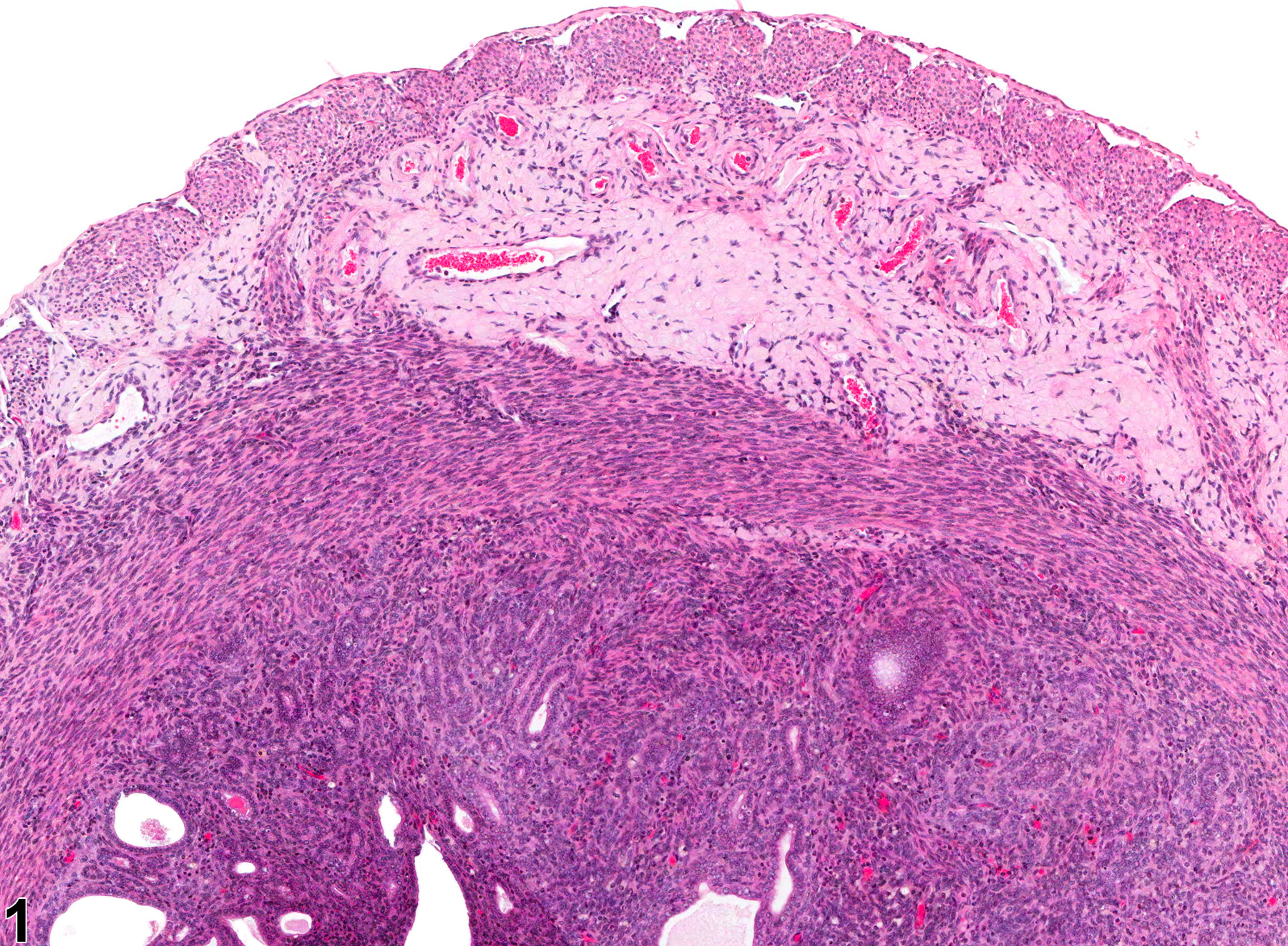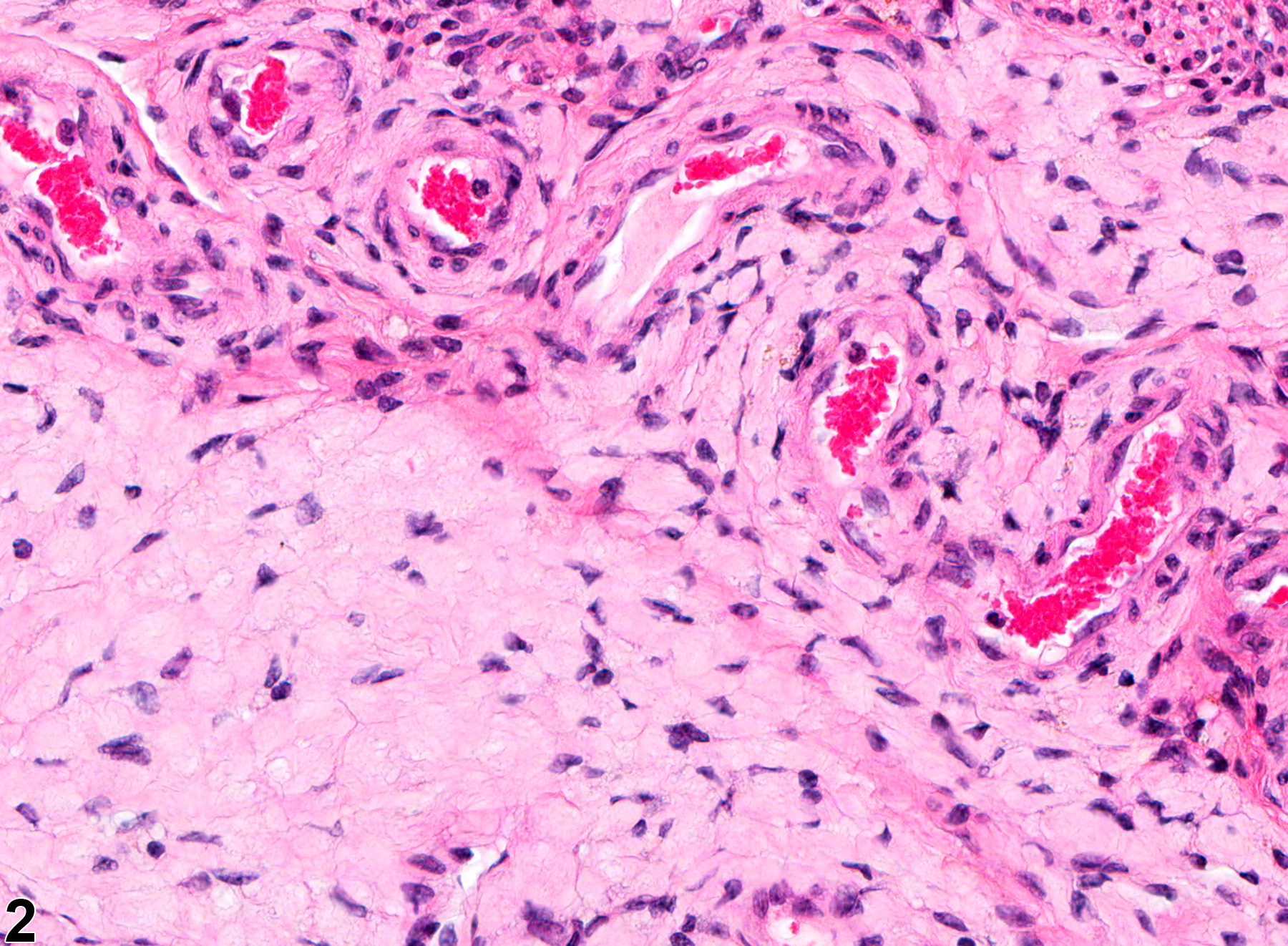Reproductive System, Female
Uterus - Amyloid
Narrative
Amyloid, an amorphous, eosinophilic, pale-staining material, is infrequently seen in mice in the stroma of the endometrium and myometrium (Figure 1 and Figure 2). In severe cases, it causes thickening and increased firmness of the uterus. The presence of amyloid in the uterus may reflect amyloid deposition elsewhere in the animal, principally in the adventitia of medium-size arteries. Amyloid deposition must be differentiated from other fibrinoid changes: fibrosis, edema, and fibrin.
Uterus - Amyloid should be diagnosed and graded whenever present. Secondary lesions such as degeneration or necrosis of resident cells should not be diagnosed separately unless warranted by severity. If the amyloid deposition may affect the interpretation of the study, it should be discussed in the pathology narrative.
Maekawa A, Maita K. 1996. Changes in the uterus and vagina. In: Pathobiology of the Aging Mouse (Mohr U, Dungworth DL, Capen CC, Carlton WW, Sundberg JP, Ward JM, eds). ILSI Press, Washington, DC, 469-480.
National Toxicology Program. 1993. NTP TR-443. Toxicology and Carcinogenesis Studies of Oxazepam (CAS No. 604-75-1) in Swiss-Webster and B6C3F1 Mice (Feed Studies). NTP, Research Triangle Park, NC.
Abstract: https://ntp.niehs.nih.gov/go/6030
Uterus - Amyloid deposition in a female Swiss Webster mouse from a chronic study. There is an amorphous, eosinophilic, pale-staining material in the myometrium.



